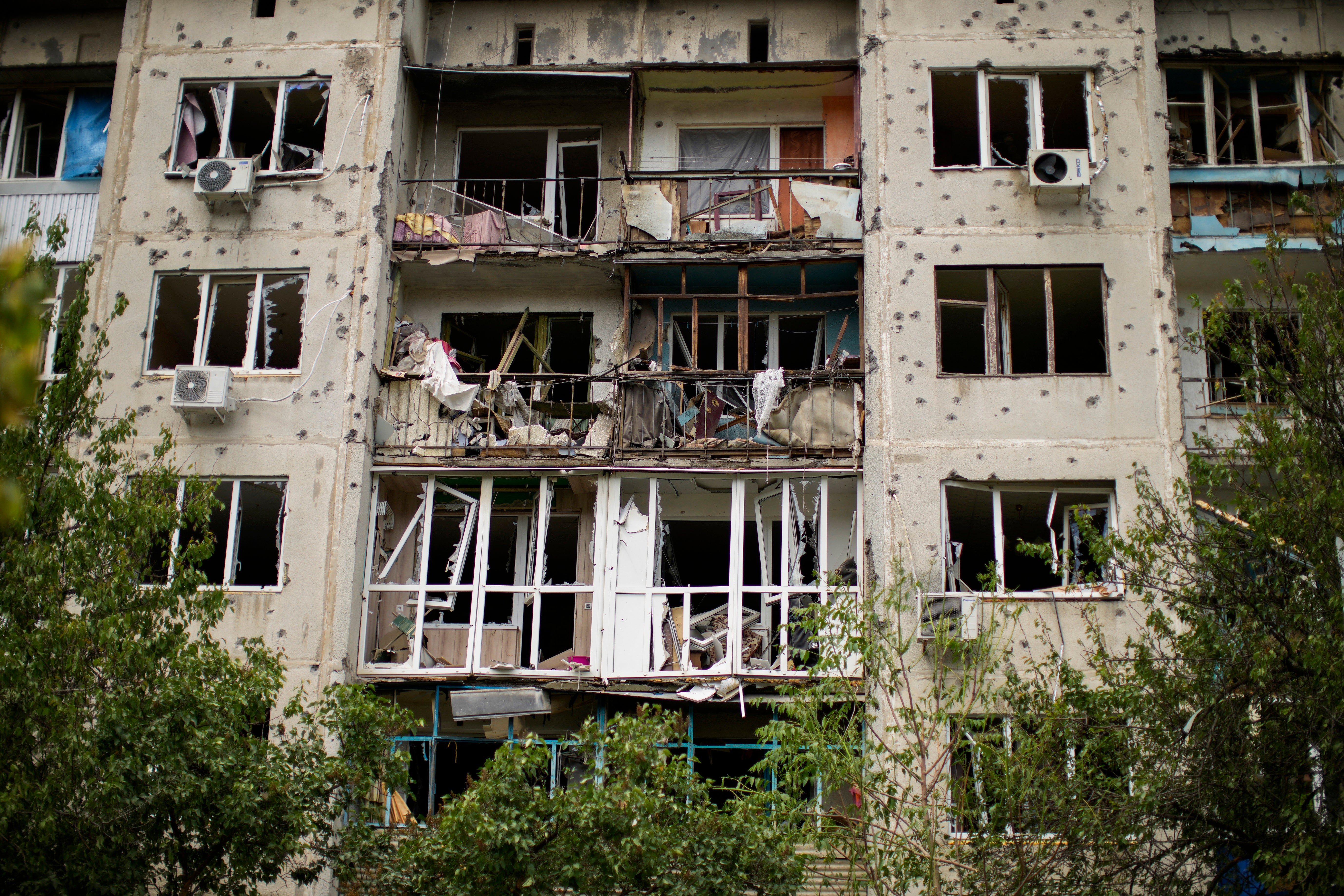Russian advance in eastern Ukraine to be delayed by ‘operational pause’, West believes
‘Disillusionment’ with campaign among senior Russian officers as well as rank and file troops

Your support helps us to tell the story
From reproductive rights to climate change to Big Tech, The Independent is on the ground when the story is developing. Whether it's investigating the financials of Elon Musk's pro-Trump PAC or producing our latest documentary, 'The A Word', which shines a light on the American women fighting for reproductive rights, we know how important it is to parse out the facts from the messaging.
At such a critical moment in US history, we need reporters on the ground. Your donation allows us to keep sending journalists to speak to both sides of the story.
The Independent is trusted by Americans across the entire political spectrum. And unlike many other quality news outlets, we choose not to lock Americans out of our reporting and analysis with paywalls. We believe quality journalism should be available to everyone, paid for by those who can afford it.
Your support makes all the difference.Russian troops in eastern Ukraine are likely to be forced to take an “operational pause” after slow and grinding advances over recent weeks have left little more than 50 per cent of the forces initially deployed by Vladimir Putin in a state of combat effectiveness, Western officials have said.
Officials said the Russians face a series of perilous river crossings and are showing signs of “disillusionment” with the campaign, not only among rank-and-file soldiers but also senior officers.
With Ukrainian defences soon to be bolstered by HIMARS rocket systems, supplied by US president Joe Biden, Russia will face increasingly effective resistance to its attempts to secure ground in the Donbas region, said one.
But the official warned that HIMARS, which is capable of firing multiple precision-guided missiles at targets up to 50 miles away, would not on its own be enough to “turn the tide of the campaign”.
In the absence of a negotiated ceasefire, the current war of attrition can be expected to continue for “a long period of time” – potentially to the end of this year or beyond – and Ukraine’s allies must be prepared to maintain their commitment for the long term, he said.
The M142 High Mobility Artillery Rocket System (HIMARS) has long been requested by Ukraine, but the US had until now refused to supply the weapons out of fear they could be used against targets in Russia.
Kremlin spokesman Dmitry Peskov said the US was “directly and intentionally adding fuel to the fire” with its weapons deliveries to Ukraine.
One Western official said: “That weapons system will enable counter-battery fire to be able to go after Russian artillery in a deeper and more effective way, but it’s also going to enable Ukrainian forces to be able to interdict Russian supply lines.
“That’s going to be a real complication for Russian forces, as and when these weapon systems arrive and they can be effectively employed.”
But he added: “The provision of HIMARS alone… is not going to turn the tide of the campaign. It’s going to enable the Ukrainians to be much more effective in the way they operate, but this needs to be – and is – set in a much wider package of support.”
Western officials believe the total number of fatalities suffered by Russia since the 24 February invasion is now above 15,000, with more than 40,000 wounded. The bulk of casualties came in the early weeks of the war.
Numbers of casualties have declined in recent weeks, largely because Moscow has narrowed the size of its front in eastern Ukraine and taken fewer risks with its troops.
But the lack of adequate medical support for many of the units in Ukraine means that many of those injured are unable to access treatment.
Following recent advances, one Western official said that there was “absolutely” going to be a need for an operational pause for the Russians to resupply and reconstitute their forces before attempting a further push towards the towns of Slavyansk and Kramatorsk.
“This has been quite a slugged-out fight in Seyevrodonetsk, and Russian commanders – having rushed to failure at various points in this campaign – I think will be very careful before thinking that they’re in a position to continue to exploit immediately,” said the official.
Preparations would be needed for “significant” challenges from river crossings on the way to Kramatorsk, which represent “probably one of the most difficult things any military force can try to do”, and which Russian forces had struggled with earlier in the campaign, he said.
These challenges would be faced in a situation where morale on the Russian side appears to be low, according to Western officials.
“The morale of the Ukrainian forces is extremely high, and even though they’re coming under some significant pressure, their performance on the battlefield remains potent,” said one. “Even when they’re faced at times with sometimes overwhelming odds locally, they still continue to fight in a pretty ferocious and determined way.
“Contrastingly for Russian forces, there are clear elements where we’ve seen low morale. We’ve seen that in some particular units where units have pretty much downed tools and declared that they don’t want to fight.
“What’s really interesting is that we’re seeing disillusionment with the nature of the campaign not just amongst junior soldiers, but we’re seeing reflections amongst senior officers, that they’re disillusioned with the campaign as well. This isn’t outbreaks of low morale amongst junior, young, inexperienced soldiers, but that feeling is happening with groups across the Russian military.”
Join our commenting forum
Join thought-provoking conversations, follow other Independent readers and see their replies
Comments